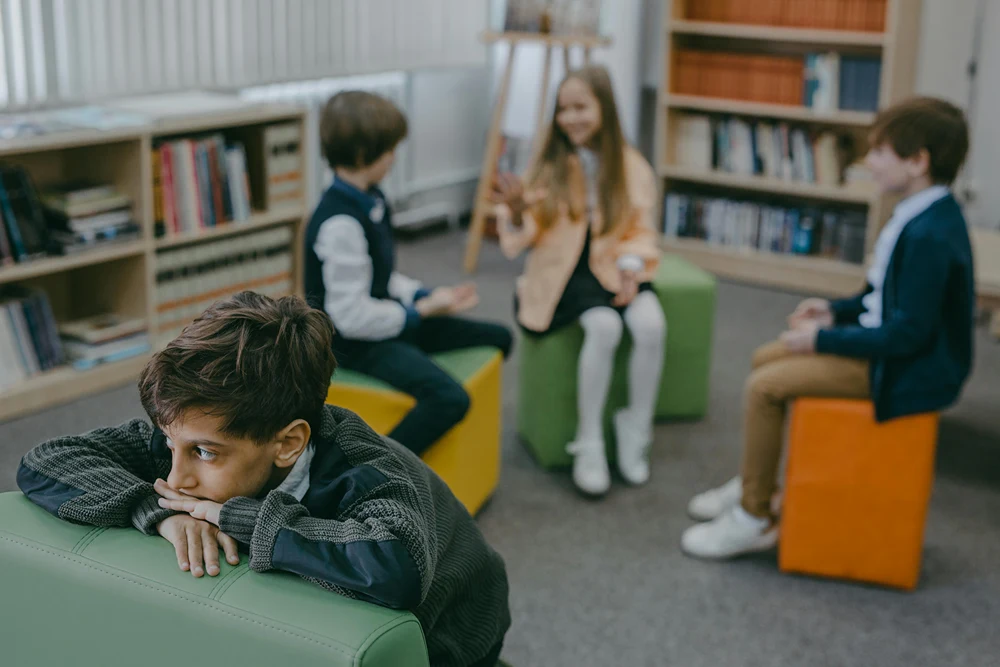Coping with School Anxiety: A Parent’s Guide
For many kids, school is a place for learning, making friends, and finding structure. But for others, it can become a source of stress. School anxiety affects children across all ages and backgrounds. Parents might notice their child starting to avoid school or waking up with headaches or stomachaches.
These can be signs that something deeper is going on. In some cases, the anxiety can look like irritability, silence, or a sudden drop in grades.
The good news is that there are ways to support your child without rushing them or forcing them to “tough it out.” Understanding what’s behind the stress is the first step. From there, small changes can help both the child and the family feel more in control.
Recognizing What School Anxiety Looks Like
Anxiety doesn’t always look like fear. Sometimes it hides behind frustration, crying spells, or sudden complaints about school. A younger child might cry at drop-off or cling to a parent. Older kids might complain about the noise, the pace, or not feeling like they belong.
Parents who keep a close eye on these patterns can pick up on changes. If your child used to enjoy school and now dreads it, there’s usually a reason. Kids don’t always know how to talk about stress, so behavior becomes the signal. The key is to stay calm and start asking gentle questions without pushing too hard.
Exploring Alternative Schooling Options
When anxiety becomes part of a daily routine, it can make mornings hard and evenings tense. For some kids, the environment itself—busy hallways, strict schedules, constant pressure—makes learning harder. This is when parents begin thinking about other learning options.
One question that comes up a lot is: can you switch to online school in the middle of the year? The short answer is yes, but it depends on where you live and which program you choose. Some districts have virtual options already in place, while others might require more planning. Families who go this route often look for programs that offer support, flexibility, and strong communication with teachers.
Online school can give anxious students the space they need to reset. Without the constant background noise or social tension, some kids find it easier to focus and learn at their own pace. It also gives parents a better look at what’s working and what’s not. However, it’s not a quick fix for every child. It takes structure, routine, and patience. Still, it’s a valid option for those who feel stuck.
Before switching, it’s helpful to talk with a school counselor, your child’s pediatrician, or other parents who’ve tried it. The goal isn’t to run from school but to find a place where learning feels safe again.
Supporting Kids Emotionally at Home
The home environment can play a big role in helping a child feel calm and heard. When school becomes a source of stress, kids need to know that home is a place where they’re safe and accepted. One of the best things parents can do is listen—without judgment or rushing into solutions. Sometimes, just having a space to talk about what’s hard makes a big difference.
Keep routines simple. A steady morning and bedtime schedule gives kids a sense of stability. Try adding a few minutes of quiet time before school or after they get home. That small break can help them reset. It’s also useful to create a calm space for homework that’s free from noise or distractions.
Emotional check-ins help too. You can ask things like, “What part of the day felt the hardest?” or “Did anything go better than you expected today?” These gentle questions keep the conversation open without adding pressure. For some kids, drawing or writing in a journal works better than talking.
If anxiety doesn’t ease up or seems to be growing, speaking with a mental health professional is a smart step. Therapists and school counselors can help kids build tools to manage their worries, and they can guide parents on how to respond without making things worse.

Working With the School to Find Support
While it’s tempting to handle everything at home, schools often have resources that can help. Most schools have counselors, social workers, or psychologists who work with students dealing with stress, anxiety, or behavior changes. Reaching out early allows you to build a team around your child.
Start by contacting your child’s teacher. They may have already noticed some patterns or challenges. Share what you’re seeing at home and ask if similar issues show up in the classroom. From there, you can talk about next steps, like meeting with a school counselor or looking into support services.
Some kids may qualify for accommodations under a 504 plan. These are adjustments that make the learning environment more comfortable. That might include sitting near the front of the class, getting extra breaks, or using a quiet area for tests. Every child is different, so these supports should match their specific needs.
The goal is to create a path where your child feels supported both at school and at home. Working together with the school sends the message that you’re all on the same side.
Building Long-Term Coping Tools
Over time, small habits can help your child handle stress better. Breathing exercises, short walks, or calming music before school can become part of a daily routine. Some kids like stress balls or small fidget tools that help them stay focused in class.
Sleep, nutrition, and screen habits also affect how a child feels. Try to keep screen time down before bed, and stick to regular meals during the day. These basic routines help build a stronger base for emotional balance.
Remind your child that it’s okay to struggle. What matters is learning how to get through tough days, even if they don’t go perfectly. Praise effort more than results.
Helping a child with school anxiety takes time, but it’s possible. With support, patience, and the right changes, most kids start to feel better. You don’t have to fix everything overnight. Just stay connected, be present, and keep looking for what works best for your child. Small changes really do add up.




